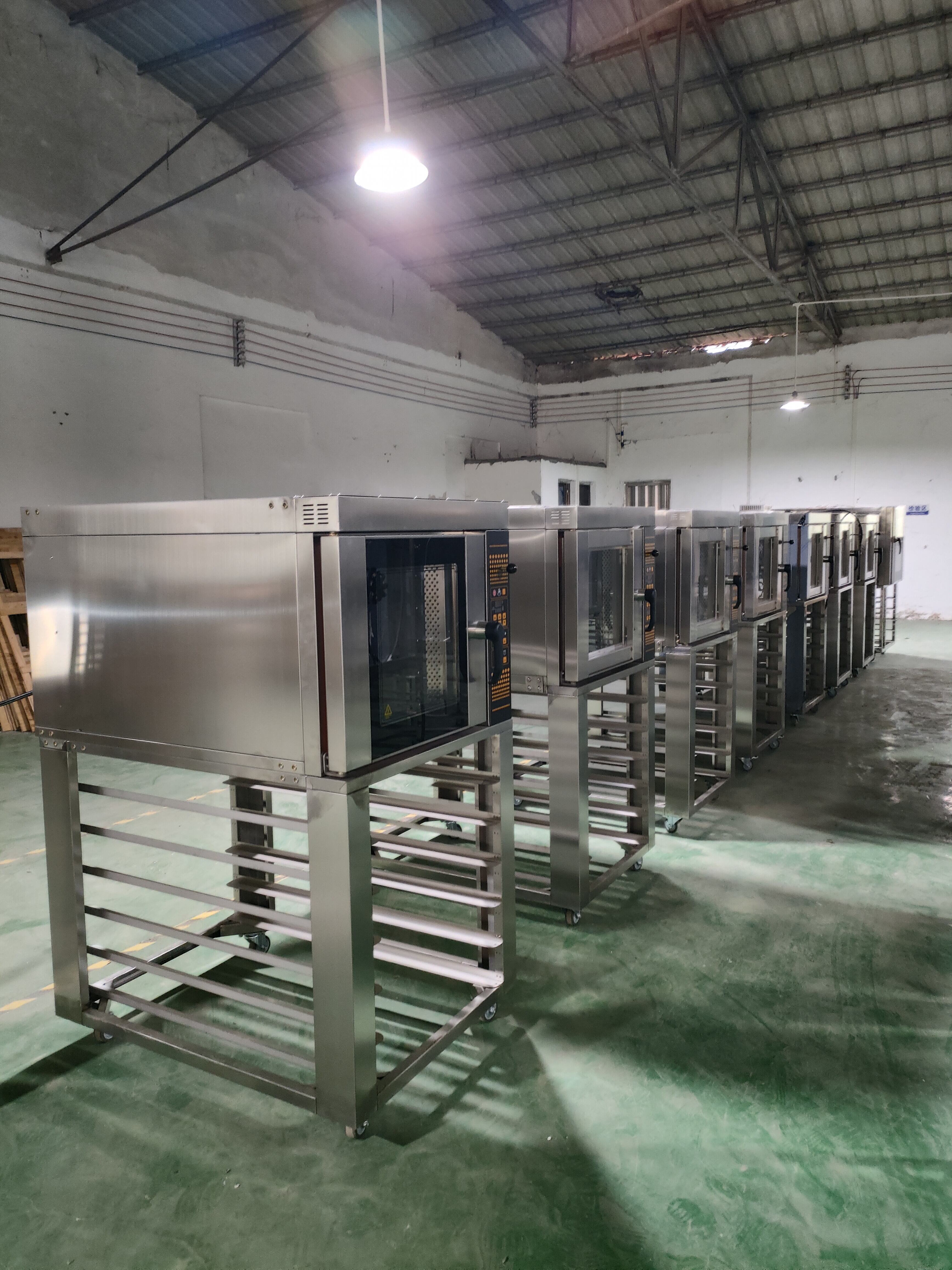Transforming Professional Baking with Advanced Convection Technology
The world of professional baking has evolved significantly with the introduction of innovative equipment designed to enhance efficiency and quality. Among these advancements, the bakers convection oven stands out as a game-changing piece of equipment that has revolutionized how commercial bakeries and professional kitchens operate. This sophisticated cooking system combines powerful convection technology with precise temperature control to deliver superior baking results consistently.
Modern bakers convection ovens represent a significant leap forward from traditional deck ovens, offering enhanced functionality that addresses the complex demands of contemporary baking operations. By understanding the fundamental advantages these ovens provide, both professional bakers and culinary enterprises can make informed decisions about their kitchen equipment investments.
Essential Features of Professional Convection Ovens
Advanced Airflow Systems
The cornerstone of a bakers convection oven lies in its sophisticated airflow management system. Unlike conventional ovens, these units employ powerful fans that circulate heated air throughout the cooking chamber in a carefully controlled pattern. This dynamic air movement ensures that heat distribution remains consistent across all rack levels, eliminating the common problem of hot spots that can lead to uneven baking results.
The engineered precision of modern convection systems allows for multiple fan speeds and airflow patterns, giving bakers unprecedented control over their baking environment. This level of customization proves particularly valuable when working with delicate items like pastries or items requiring specific humidity levels during baking.
Temperature Precision and Control
Modern bakers convection ovens feature advanced temperature control systems that maintain precise heat levels throughout the baking cycle. Digital controls allow for accurate temperature settings within one degree, while multiple temperature probes monitor conditions across different zones within the oven cavity. This precision ensures that whether you're baking delicate macarons or hearty artisan bread, the temperature remains stable and accurate.
Many models also incorporate programmable temperature staging, allowing bakers to set up complex baking profiles that automatically adjust temperature and fan speeds at specific intervals. This capability proves invaluable for products requiring varying temperatures during different stages of the baking process.
Efficiency and Productivity Benefits
Reduced Baking Times
One of the most significant advantages of a bakers convection oven is its ability to reduce overall baking times significantly. The enhanced air circulation allows for more efficient heat transfer to the food products, often resulting in cooking times that are 25-30% shorter than traditional ovens. This increased efficiency translates directly into higher production capacity and improved kitchen workflow.
Moreover, the reduced baking time doesn't compromise quality; instead, it often leads to better results as products spend less time losing moisture during the baking process. This efficiency is particularly valuable during peak production periods when output demands are highest.
Energy Conservation and Cost Savings
The superior efficiency of bakers convection ovens extends beyond faster baking times to include significant energy savings. These ovens typically require less energy to maintain consistent temperatures and can often accommodate larger batch sizes, resulting in lower energy consumption per unit of product. The combination of faster baking times and improved energy efficiency can lead to substantial cost savings over time.
Additionally, many modern convection ovens incorporate energy-saving features such as automatic shutdown systems, improved insulation, and smart power management, further reducing operational costs while maintaining optimal performance.

Quality and Consistency Improvements
Enhanced Product Uniformity
The controlled airflow in a bakers convection oven ensures that heat distribution remains uniform throughout the baking chamber. This consistency leads to remarkably even browning and cooking across entire batches, eliminating the need to rotate pans during baking. Whether producing multiple sheets of cookies or several racks of bread, bakers can rely on consistent results from top to bottom and front to back.
This uniformity not only improves product quality but also reduces waste and rework, as fewer items need to be discarded due to uneven baking or inconsistent results. The predictability of results also allows for more standardized production processes and better quality control.
Superior Texture and Finish
The dynamic air movement in a bakers convection oven creates ideal conditions for developing desirable product characteristics. For pastries and bread, this means better crust formation and more consistent internal structure. The controlled environment helps achieve the perfect balance between exterior crispness and interior moisture retention, resulting in professional-quality results every time.
The precise humidity control available in many modern convection ovens also allows bakers to fine-tune the moisture levels during baking, essential for achieving specific textural qualities in different products. This level of control is particularly valuable when working with artisanal breads and delicate pastries.
Frequently Asked Questions
How does a bakers convection oven differ from a standard convection oven?
A bakers convection oven is specifically designed for commercial baking operations, featuring more powerful fans, better temperature control, and larger capacity than standard convection ovens. They often include additional features like steam injection systems and more sophisticated programming options tailored to professional baking needs.
What types of baked goods work best in a convection oven?
Most baked goods benefit from convection baking, including cookies, breads, pastries, and pies. The consistent heat distribution is particularly beneficial for items requiring even browning and proper rise. However, some very delicate items might require adjusting fan speeds or using specialized settings.
How much maintenance does a bakers convection oven require?
While bakers convection ovens are built for durability, they do require regular maintenance to ensure optimal performance. This typically includes daily cleaning of interior surfaces, regular inspection of door seals and fans, and periodic professional servicing to maintain calibration and check mechanical components. Following manufacturer maintenance schedules can significantly extend the oven's operational life.

